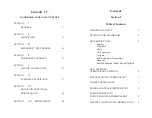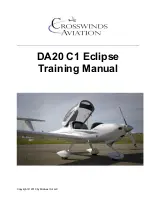
24
25
ENGLISH
RULE N°1: YOUR OWN SAFETY
RULE N°2: GET SET UP
RULE N°3: CHOOSE YOUR PRACTICE SPOT
Using a kite involves inherent risks and can cause severe injuries or, sometimes fatal, accidents
if misused. F-ONE therefore strongly recommends to follow kiting lessons in a specialized school
before using a kitesurfing kite for the first time.
To find your nearest school, please check our website at
www.f-one.world
under the tab
«find a dealer». When kitesurfing, you agree to take full responsibility for your own safety and those
of others, which includes informing subsequent users/owners of your equipment of the risks and
responsibilities involved.
Before practicing, make sure that you are properly covered by an insurance for any damage
or injuries caused to third parties while practicing kiting sports. Please refer to your natio-
nal kitesurfing body or federation to get more information on insurance and responsibilities.
A FEW SAFETY TIPS TO KNOW AND FOLLOW:
Specialized equipment contributes to your own safety but constant care and caution remains the best way
to avoid any problem. Please keep in mind that wind and weather can be unpredictable and that no one can
be in full control of the kite all the time.
Life vest
.
The life vest can help you with the waterstart and the relaunch of your kite. It might also be welco-
me when falling hard from your first jumps and will become your new best mate if you ever have
to swim back to the shore.
Harness
.
Your harness must be comfortable but strong as it is the link between you and the kite. Seat or
waist harnesses can both be used, however seat harnesses are more appropriate for beginners.
Indeed, seat harnesses do not move upward as much when keeping the kite right above you which
beginners tend to do more. A few useful accessories for your harness: a line cutter and a loop to
attach your kite leash.
Never ever tie yourself permanently to a kite without a quick-release device. You should always be
able to release the kite from you rapidly in case of emergency (tangled lines, strong gusts of wind,
injury…). You should therefore rinse your gear as often as possible and perform regular checks of the
wear of your release system and all other components.
All F-ONE kitebars are fitted with a quick release enabling you to fully depower your kite and safety
leash which can be released to let go the kite completely.
You should never attempt to grab a kite by its lines as they can cause severe cuts under tensions.
This kite is neither a flying device (such as a paraglider) nor a floating device and should not be used
as such.
You should never go riding alone. It is strongly recommended to practice in the company of other
users who could eventually call for assistance or help in case of emergency.
Helmet
.
It is strongly recommended to wear a helmet to protect you from your board in case of a fall or any
other unexpected situations and especially when launching and landing the kite from the ground.
Wetsuit
.
Choose a full-length wetsuit (water T° <20°C) or a shorty (water T°>20°C) depending on the water
temperature. Be aware that you will use more energy when you are cold.
Observe local laws and regulations regarding kitesurf and the usage area.
Choose your spot according to your level
.
The choice of a good spot is a prerogative for a safe learning. The best spot is not necessarily the
spot where you find the most kites. If you just started or if you do not control your kite properly,
the best spot is often the least crowded one. The water and wind conditions also vary, advanced
kitesurfers often look for strong wind and good waves where beginners should be looking for calm
waters and softer winds. When first starting out it is recommended to look for a place with fairly
shallow waters.
Choose an obstacle free area
.
Check that the space on your sides and downwind from you is free of obstacle: no houses, no
trees, no cars or jetties. Under no circumstances should you be riding near electrical posts and
wires, or near an airfield or even near a harbor.
Wind direction
.
Never ride in strong offshore wind. The wind can die at any moment or a line can break.
In offshore wind it is harder to swim back to shore, the wind and the current pushing away from
the beach. It is not recommended to ride when the wind is on-shore especially for beginners as
the wind pushes directly onto the beach. This will make your learning harder: you will not be able
to do good runs and go up wind, and you will end up on the sand very quickly. This will also be
more risky as any gust could send you onto the sand and your kite may fall violently onto the sand.
Therefore always ride while the wind is side or side-on, this will let you go downwind while keeping
a safe position in case of an emergency.
The area down the wind
.
Be cautious and check that there are no obstacles going down wind. You should always consi-
der room for error. Keep in mind that the risk is to go down wind, beginner or not. There is
always a risk of breaking a line, losing your board, or breaking your harness… therefore the
beach down the wind should always be accessible. Think that you may have to walk back
alongside the beach (check that there are no rocks, cliffs, fences, or jetties blocking your way).
If you are just starting out or if you cannot entirely control your kite, be careful as to where you
stand on the spot: if the spot is big enough, it is better to stand upwind from other kites to avoid
crossing your lines with theirs. It is less tricky for you and them, this will allow you to concentrate
on your flying and less on others.
USING A KITE INVOLVES RISKS
AND CAN CAUSE SEVERE INJURIES.
CAREFULLY READ THIS MANUAL BEFORE USE.
SAFETY
Содержание DIABLO V.4
Страница 10: ...18 19...





























